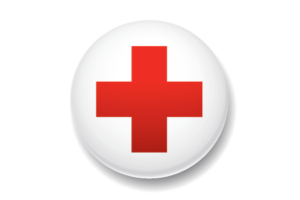
Cosmetic medicine lessons play an integral part in shaping the future of medical aesthetics. For medical professionals eager to expand their skills, these lessons offer more than just theory—they provide the foundation for patient safety and excellence in aesthetic treatments.
Why Learn Cosmetic Medicine?
The increasing demand for aesthetic procedures has made training essential for medical practitioners. Knowledge in medical aesthetics isn’t limited to botox training or dermal fillers. It extends to mastering facial anatomy, understanding skin anatomy, and developing treatment plans tailored to individual needs.
Healthcare professionals who pursue aesthetic medicine training gain a competitive edge. They learn to provide anti-aging treatments, chemical peels, and platelet-rich plasma procedures with confidence. The skills aren’t just about performing techniques—they’re about achieving the highest caliber of patient care.
Key Elements of Cosmetic Medicine Lessons
Comprehensive Training for Practitioners
Cosmetic medicine lessons focus on both theoretical and practical learning. Comprehensive training covers skin anatomy, facial aesthetics, and the aging process. For instance, practitioners gain insights into how botulinum toxin works and why it’s effective for various procedures.
Hands-On Workshops and Live Demonstrations
Practical application is vital. Hands-on training allows medical professionals to refine their techniques under expert guidance. Live demonstrations further enhance understanding, bridging the gap between theory and practice. Whether it’s small group sessions or private training, these workshops prepare practitioners for real-world scenarios.
Advanced Techniques for Aesthetic Medicine
Aesthetic training courses introduce innovative methods like stem cell therapy and advanced dermal fillers. The new techniques elevate patient outcomes, making them a sought-after part of the aesthetic medicine curriculum.
The Benefits of Aesthetic Medicine Training
Enhanced Patient Care
Medical doctors and registered nurses who complete aesthetic courses can better address patient concerns. From uneven skin texture to sagging skin, these lessons provide solutions tailored to each case. A solid understanding of skin rejuvenation and regeneration ensures optimal results with minimal downtime.
Broader Career Opportunities
Medical aesthetics training opens doors for practitioners. Whether focusing on botox training, cosmetic injections, or chemical peels, the skills gained are valuable. Physicians and other healthcare professionals find these lessons beneficial for diversifying their practice.
Focus on Safety and Ethics
Patient safety is at the heart of every training course. Learning proper techniques and understanding important considerations ensures practitioners perform aesthetic procedures responsibly. Training emphasizes the ethical side of medicine, making safety an integral part of every treatment.
What to Expect from Training Courses
Aesthetic training involves a blend of virtual courses, in-person workshops, and live demonstrations. Course content often includes:
- Understanding facial and skin anatomy.
- Techniques for botulinum toxin and dermal fillers.
- Treatment options for pigmentation issues and the aging process.
- Basics of chemical peels and platelet-rich plasma therapy.
- Guidance on medical history evaluations and patient care.
For those starting at a basic level, initial consultation skills and other courses help build confidence. Meanwhile, experienced practitioners benefit from advanced modules that explore complex techniques and various procedures.
Choosing the Right Training
High-Quality Education
Select programs that prioritize the highest quality education. Training physicians with a board-certified background ensures reliable instruction. Look for courses offering both theoretical knowledge and hands-on workshops.
Flexible Learning Options
Some prefer private training, while others thrive in small group settings. Flexible options accommodate different learning styles, allowing participants to choose what works best.
Support Beyond the Classroom
A strong support team is vital. The best courses offer ongoing guidance, ensuring practitioners feel confident long after completing their training. Programs that include post-training resources often lead to better patient outcomes.
Aesthetic Medicine as an Integral Part of Modern Practice
Cosmetic medicine has evolved into an integral part of healthcare. Combining traditional medicine with aesthetic procedures allows practitioners to address diverse patient needs. Whether it’s stem cell therapy, botox, or chemical peels, the focus remains on improving lives.
By mastering the skills taught in cosmetic medicine lessons, medical professionals enhance their practice. They gain the tools to adapt to the increasing demand for aesthetics while maintaining the highest standards of care.
The Takeaway
Cosmetic medicine lessons are more than a stepping stone—they’re a transformative journey for medical professionals. The second sentence of this final paragraph reinforces their value: they help practitioners excel in aesthetic medicine. From hands-on workshops to advanced techniques, these lessons empower professionals to provide the best possible care.
Frequently Asked Questions
What is the importance of an aesthetic medicine certificate?
An aesthetic medicine certificate validates your expertise in performing cosmetic procedures and enhances your professional credibility.
Are cosmetic procedures covered in group training sessions?
Yes, group training often includes hands-on practice for various cosmetic procedures, providing collaborative learning opportunities.
Can group training help in obtaining an aesthetic medicine certificate?
Group training offers comprehensive education and practice, which are essential for earning an aesthetic medicine certificate.






